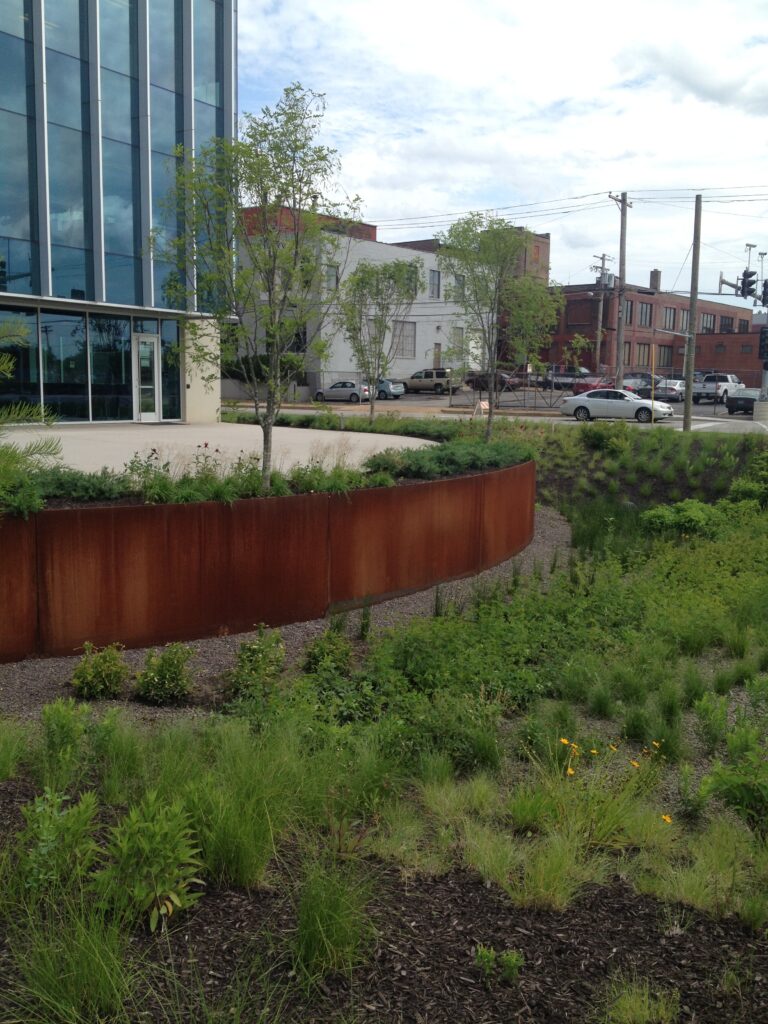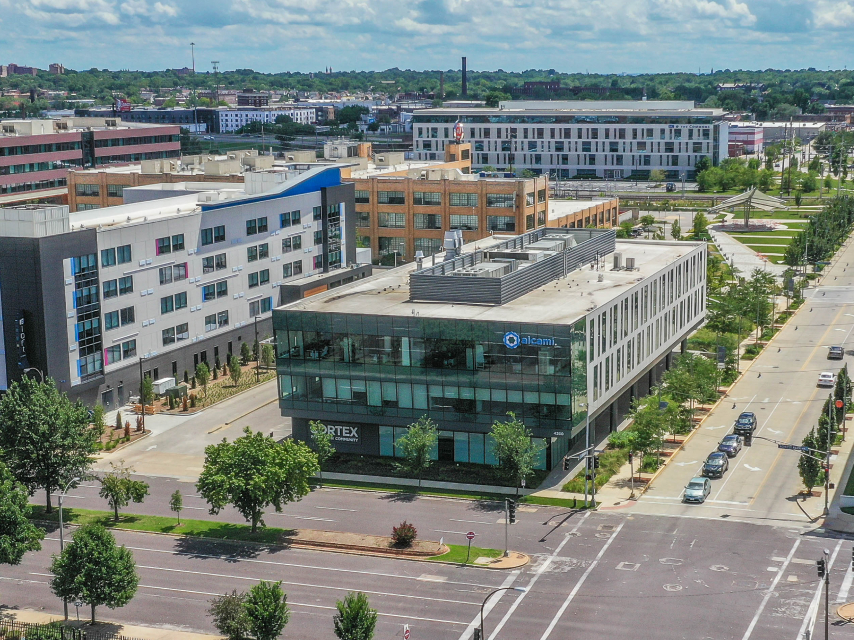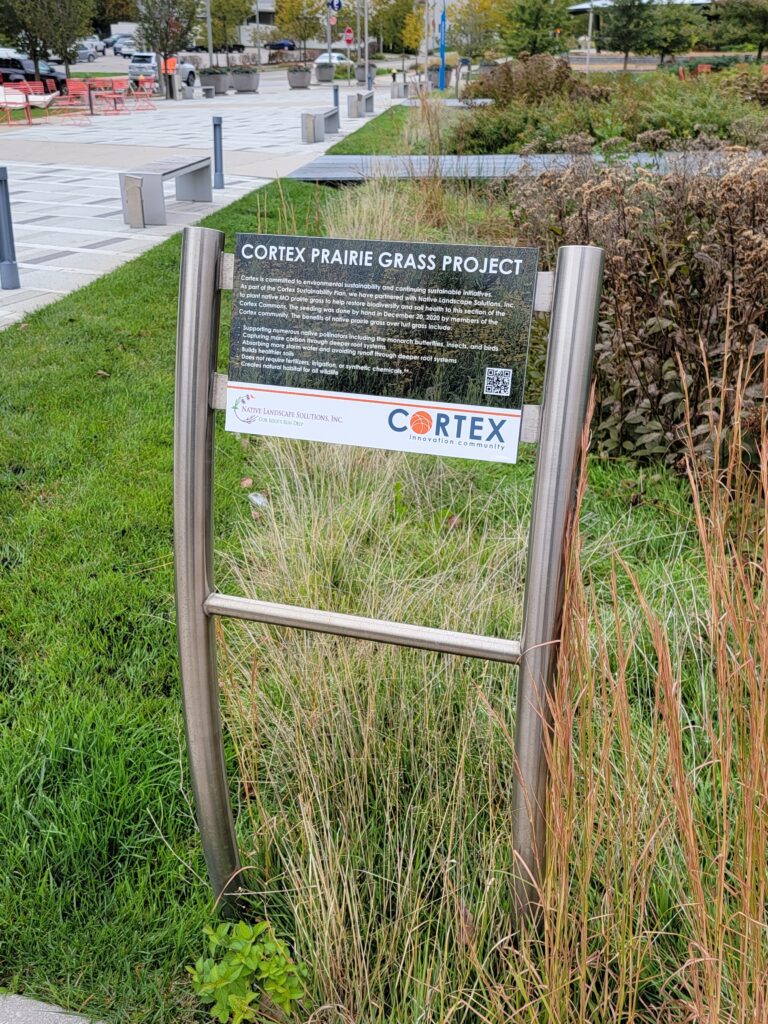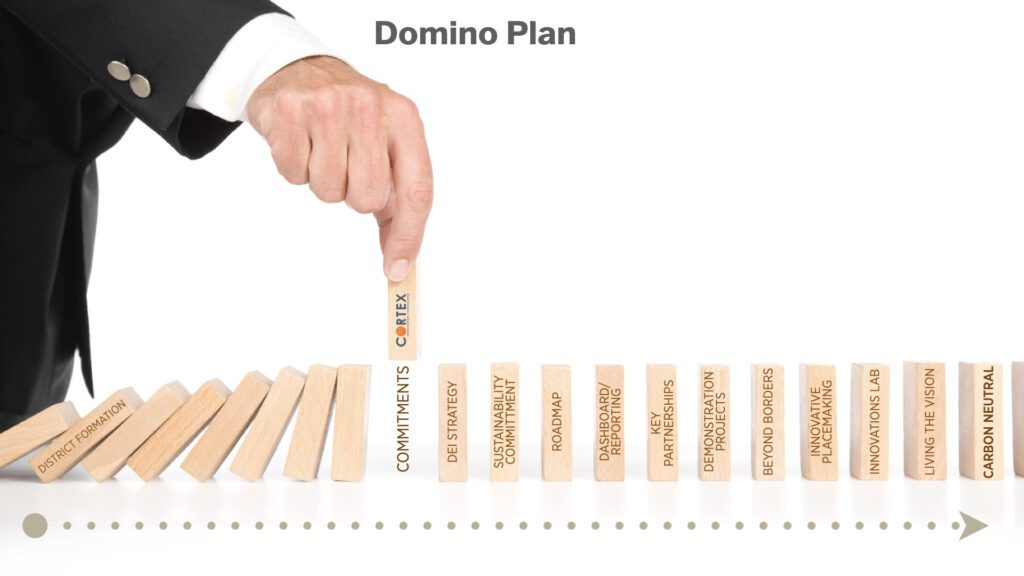“Cortex has a larger responsibility to the
St. Louis region beyond its 200 acres.”
Methodology
This is how we shaped our plan to create the roadmap that is our Sustainability Action Plan:
- Stakeholder Engagement Workshops
- Interviews with Cortex Board Members
- Interviews with Cortex Staff
- Coordination with Physical Master Plan and Framework Committee
- Analysis of the physical assets of the District, including inventorying each building in the District
- Analysis of the climate and resiliency assets and risks to the District
- Research of regional assets, partners, transit and demographic trends
Building on Past Achievements
Over the past decade, Cortex successfully has been implementing sustainability projects and actively participating in the sustainability space. The partnerships with our founding institutions, our events and programing, and our standing over time in the community has provided the network of introductions to many exciting regional programs and the opportunity to build these into our growth plans. Our journey in sustainability began many years ago through the vision of our leadership and dedication of our staff.
- MSD Green Infrastructure Grant Program $5.1M
- Five LEED Certified buildings in the Cortex District, including 4240 Duncan, which is LEED Platinum
- Brickline Greenway installed in partnership with Great Rivers Greenway
- Cortex Commons rain gardens and bio retention system
- Sponsor of St. Louis Green Business Challenge since 2020
- Member of the OneSTL Energy & Emissions Committee
- Partnership with PocketParks at Forest Park Ave & Vandeventer on two-acre park
- WashU RESET student project on Renewable Energy in the Cortex Innovation District
- Solar Analysis completed
- Lighting Retrofit at 20 S. Sarah St.
- Zero-emissions landscaping on Cortex Commons
- Cortex Prairie Grass Project to restore biodiversity and soil health



Project Pathways
A good strategic sustainability plan often requires a series of things to happen in certain order, or certain programs need to launch before others. Because of this, sometimes these pathways are referred to as a “step plan” or a “domino plan.” While all of these things don’t necessarily need to happen in this exact order, it does allow us a vision of how things could play out and provide a framework for the logical order of certain things.
NOTE: These “steps” or “dominoes” are aligned to the larger Sustainability Action Plan.

- DEI Strategy: Baked into the formation of Cortex and informs everything we do.
- Sustainability Commitment: Effort began in 2020 with initial stakeholder workshops.
- Sustainability Roadmap: This plan serves as the roadmap to a more sustainable District.
- Greenhouse Gas Inventory: Collect all scope 1 & 2 emissions data from all buildings within Cortex to set a baseline against our goals and plot-reduction targets. This will become the first sustainability dashboard.
- Sustainability Dashboard and Reporting: A series of metrics and outcomes will be tracked through a public-facing dashboard to provide transparency and accountability on the progress of our targets. This step is required to prepare for partnerships.
- Key Partnerships: Outlined in the Sustainability Action Plan, partnerships are vital to our success but also will help shape and inform future steps.
- Demonstration Projects: Aligned with the Cortex Physical Master Plan, there are several demonstration projects identified that would be both visible and impactful for the District.
- Beyond District Borders: With partnerships and initial demo projects in place, we can look beyond the District boundaries and to positively impacting other communities. We’ll use Cortex as a staging and proving ground for some projects, but also a venue for convening these discussions.
- Innovative Placemaking: The effects of our programs, policies, and projects will be communicated and put on display throughout the District, but also at our partners’ venues (Regional Colleges, Botanical Gardens, Airport, City parks).
- Innovations Lab: In order to scale these impacts, we foresee the possible need for an “Innovations Lab” tied to these efforts. It could be housed within the District, or be decentralized and made up of nodes across the region among our partners.
- Living the Vision: Now underway, tracking and maintaining progress toward our larger targets is critical.
- Carbon Neutrality / Regenerative District: Once we’ve met the intent of the goals, it’s time to revisit and establish new targets and goals to achieve. We’ll build on our success and expand our vision.
